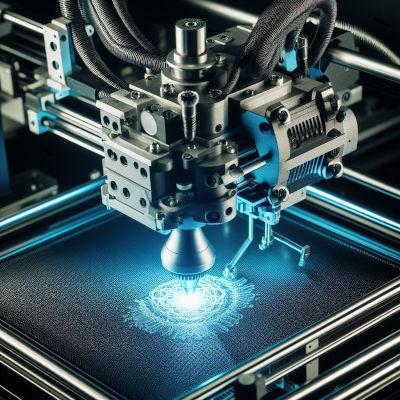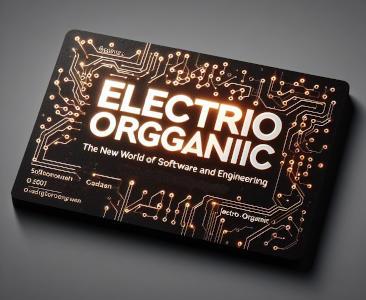What is Spot Gloss UV Printing?

What is Spot Gloss UV Printing?
Spot gloss UV printing is a technique used in printing to add a glossy and reflective coating to specific areas of a printed piece, such as text, images, or graphics.
UV coating is a type of varnish that is applied to printed materials and cured instantly using ultraviolet light. This coating adds a high-gloss finish to the printed surface, enhancing its visual appeal and durability.
Spot Application: In spot gloss UV printing, the UV coating is applied only to selected areas of the printed material rather than covering the entire surface. This selective application allows you to create contrast and highlight specific elements of the design.
The areas coated with spot gloss UV stand out due to their shiny and reflective appearance compared to the rest of the print, which may have a matte or satin finish. This technique can be used to accentuate logos, text, images, or other design elements, making them more eye-catching and appealing.
Spot gloss UV printing offers several advantages, such as increased vibrancy and depth to printed materials, improved scratch and abrasion resistance, and a luxurious look and feel. It can be used in various print projects, including business cards, brochures, packaging, and promotional materials.
How to do UV printing?
UV printing typically requires a specialized printer that is specifically designed to handle UV-curable inks and incorporate UV curing systems. These printers are expensive compared to traditional inkjet or laser printers.
If you don't have access to UV printing equipment or expertise, there are printing services and companies that specialize in UV printing. These professional printing services can handle UV printing jobs for you, whether you need small-scale projects like business cards or large-scale projects like banners or signage.
Why is it called UV?
This style goes by a variety of names. Spot gloss, raised spot UV, spot varnish, UV spot–but they all refer to the same thing. And the results are always stunning.
The technique is called UV printing because it involves the use of ultraviolet (UV) light to cure or dry the ink or coatings applied during the printing process. The term "UV printing" is derived from the critical role that ultraviolet light plays in the curing process of UV-curable inks, distinguishing this printing technique from others that rely on different drying or curing methods.
UV printing utilizes UV-curable inks that contain special compounds known as photoinitiators. These photoinitiators remain inert or inactive until they are exposed to UV light. When the UV-curable inks are applied to the printing substrate (such as paper, plastic, metal, etc.), they remain wet and fluid until they are exposed to UV light. The UV light triggers a photochemical reaction in the photoinitiators within the ink. The photochemical reaction initiated by UV light causes the photoinitiators to break down into reactive molecules. These reactive molecules then interact with other components in the ink, leading to a rapid polymerization process. As a result of polymerization, the UV ink transforms from a liquid state to a solid state almost instantly. This solidification or curing process occurs within seconds of exposure to UV light. The rapid curing of UV inks under UV light means that the printed material is dry and ready for handling immediately after it comes out of the UV printer. There's no need for additional drying time or processes.
The use of UV-curable inks and UV light curing offers several advantages, including vibrant and durable prints, the ability to print on a wide range of substrates, resistance to fading and abrasion, enhanced color saturation, and the ability to create special effects such as spot gloss UV coatings.
Is it really gloss?
No, spot gloss UV printing can indeed create a glossy finish on printed materials, but it's important to clarify that the term "gloss" in UV printing refers to the reflective and shiny appearance achieved through the UV curing process.
Is it the same as 3D printing?
No, spot gloss UV printing is not the same as 3D printing. Spot gloss UV printing is a technique used in traditional two-dimensional printing processes where a glossy and reflective UV coating is selectively applied to specific areas of a printed piece to enhance visual appeal and durability. In contrast, 3D printing is an additive manufacturing process that builds three-dimensional objects layer by layer using materials such as plastics, metals, ceramics, or composites. 3D printing creates physical objects with volume and depth, allowing for the production of complex shapes, prototypes, functional parts, and customized products, whereas spot gloss UV printing enhances the appearance of flat printed materials with a shiny and reflective surface coating.
what is blind spot UV treatment
Blind spot UV treatment is a specialized printing style where a clear, glossy UV coating is applied to specific areas of a printed material without any underlying ink or color. This creates a raised and shiny effect on the surface, enhancing the visual appeal and adding tactile interest to the design. The term "blind" signifies that the spot UV is applied to blank areas, creating a contrast between the glossy raised elements and the rest of the matte or satin finish. Blind spot UV treatment is commonly used to highlight logos, text, graphics, or patterns, adding a luxurious and professional touch to various printed materials like business cards, brochures, packaging, and promotional items.
Spot UV Process for business cards
The spot UV process for business cards involves selectively applying a glossy and reflective UV coating to specific areas of the business card design to create a visually appealing and professional finish.
Design Preparation: Start by designing your business card layout using graphic design software. Identify the elements of your design that you want to enhance with spot UV, such as logos, text, graphics, or specific patterns.
Spot UV Layer: Create a separate layer in your design file for the spot UV areas. Use a contrasting color or indicate the spot UV areas clearly to differentiate them from the rest of the design. This layer will guide the spot UV application process.
Print Setup: Once your design is ready, prepare the file for printing. Ensure that your print file includes both the regular print elements and the spot UV layer. Specify the spot UV areas clearly in the print file.
Printing Process: The business card design is printed using traditional printing methods such as offset printing or digital printing. This process applies the standard ink or toner to the entire business card surface. After printing the base design, the spot UV coating is applied using a UV printing or coating machine. The machine uses UV-curable coating that is selectively applied to the designated spot UV areas based on the spot UV layer in the print file.
UV Curing: Once the spot UV coating is applied, the business cards pass through UV curing equipment. UV lamps or LEDs cure the UV coating instantly, creating a glossy and reflective finish on the spot UV areas while leaving the rest of the card with a matte or satin finish.
Why UV Printing
Spot UV adds a touch of elegance and sophistication to your business cards, making key elements stand out.
The UV coating provides extra protection against scratches and wear, increasing the longevity of your business cards.
Spot UV finishing conveys a professional image and attention to detail, leaving a positive impression on recipients.
Eye-catching: UV printing, particularly spot UV, can create a visually striking and memorable effect on a business card. The glossy and reflective areas stand out against the matte or satin background, drawing attention to key elements of the design such as logos, text, or graphics. This eye-catching feature can leave a lasting impression on recipients and make the business card more memorable.
Easy to Read: When applied judiciously, spot UV can actually enhance readability. By selectively highlighting important information like contact details or company name with spot UV gloss, these elements become more prominent and easier to read against the background. This strategic use of spot UV can improve the overall clarity and legibility of the card.
High-End Appearance: The addition of spot UV or other UV effects can elevate the perceived quality and sophistication of a business card. The glossy finish and tactile appeal of spot UV create a sense of luxury and professionalism, signaling to recipients that the card and, by extension, the company take pride in attention to detail and high-quality presentation. This high-end appearance can positively influence how the cardholder views the business.
Card Less Likely to Be Tossed: To ensure that the business card doesn't get tossed aside, it's crucial to invest in higher quality design and printing methods. UV printing, including spot UV, adds value to the card by making it visually appealing, durable, and memorable. A well-designed and professionally printed business card with UV effects is less likely to be perceived as "cheap" or disposable, increasing the chances that recipients will keep and refer back to it when needed.
UV printing produces an exclusive eye-catching effect where the shiny portions reflect light uniquely. Additionally, when not reflecting light, spot UV on a dark shade intensifies the color contrast. Moreover, when applied over a silk coating or a similarly smooth matte finish, spot UV gloss introduces a textural contrast that gives a delightful and luxurious feel when touched by a thumb or finger on the business card.
One study found that about 88% of business cards handed out are thrown away within a week. This statistic underscores the importance of creating memorable and impactful business cards that make a positive impression to increase the likelihood of retention and follow-up engagement.
Spot UV business cards are commonly printed on business cards with a silk satin or matte finish, enhancing the luxurious appeal and accentuating the raised glossy areas. This is particularly important given that 72% of individuals assess a company based on the quality of its business cards, and 61% are hesitant to engage in business with someone whose card appears "cheap."
Does UV process for a business card worth it?
Yes, the UV process for a business card is worth it as it adds a visually striking and professional touch with glossy highlights. This makes the card more eye-catching and memorable, enhances readability for key information, and gives a high-quality, upscale appearance that reduces the likelihood of it being discarded.

Tips on UV printing
Here are some tips for UV printing:
Use CMYK Colors: Ensure your design uses CMYK color mode for accurate color representation in the UV printing process.
300dpi Resolution: Design your artwork at a resolution of 300 dots per inch (dpi) to ensure high-quality output.
Respect 3mm Boundary: Avoid placing important design elements within 3mm of the card's edge to prevent trimming issues.
Choose Vector Graphics over Raster: Prefer using fonts rather than converting them to outlines, especially when designing in Adobe Illustrator. Illustrator's vector layers preserve edges better than Photoshop's rasterized layers, resulting in cleaner designs during UV printing.
Good design
To create a balanced design for a card featuring both matte and glossy elements, it's wise to be mindful of your color choices. Avoid excessive colors since the contrasting textures already capture attention. Instead, focus on highlighting your contact details. While a plain white card may seem simple, colored business cards are retained about ten times longer and are deemed more memorable by 78% of people. When designing a spot UV business card, limit your color palette to three colors, as the spot UV effect will enhance the overall design.